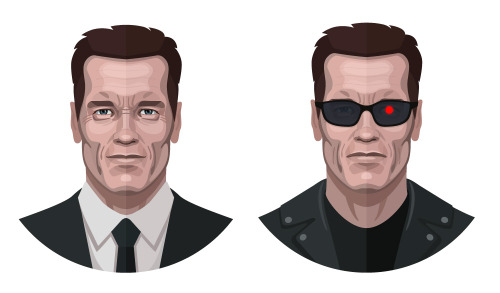How do we achieve instant recognition? By simplifying.
First, we’ll make the face completely symmetrical. Although no face in nature is symmetrical, symmetry is what we consider beauty. So it’s ok to improve the face. And symmetry does not make most people’s faces unrecognizable, unless they are severely asymmetrical.
Second, we’ll look for features that are unique to this particular face. This skill of noticing what is unique about a person or an object is the crux of being a good illustrator. Henri Toulouse-Lautrec was great at this when drawing people. It is as if he had a mental database of faces and when he met a new person he would mentally compare them to all the other faces he has ever seen and notice what was different about this particular one. How was he so observant? Almost every night he worked in cabarets, surrounded by crowds of unwitting strangers who had no idea they were being observed.
So observing people “in their natural habitat” helps us to learn to actually see them and then illustrate them. Same is true for objects.
But I have not yet met Arnold Schwarzenegger. Although, I’d love to.
Working with photos can work only if you see enough of different photos from different angles so that you have an idea of what the person looks like in real life. Photos distort our appearance - people sit at an angel, the light often does not light up all the key features, they might put on an unnatural for them expression, etc. But looking at several dozen photos should clear up these inaccuracies. If you can look for photos in and out of studio.
Third, get the basics right. A face becomes already recognizable if you draw the eyes, nose and lips with the correct distance from each other. Face shape is also key.
Fourth, build a character. A good illustration shows a face. A great illustration shows a character. I think most of Arnold’s character comes through his eyes, his lower jaw, and the wrinkles. You can’t become a bodybuilding champion, a leading actor, and a governor having a relaxed face. His eyes are intense and focused. His jaw hints at uncompromising work ethic. And the pain of lifting more than 500 pounds at a time for years is imprinted in his wrinkles. The older the person is the more you can read from their face. Older faces tend to “tell more.”
With all this detail, we still have to remember to simplify it. The balance between too much and not enough is a delicate one.
